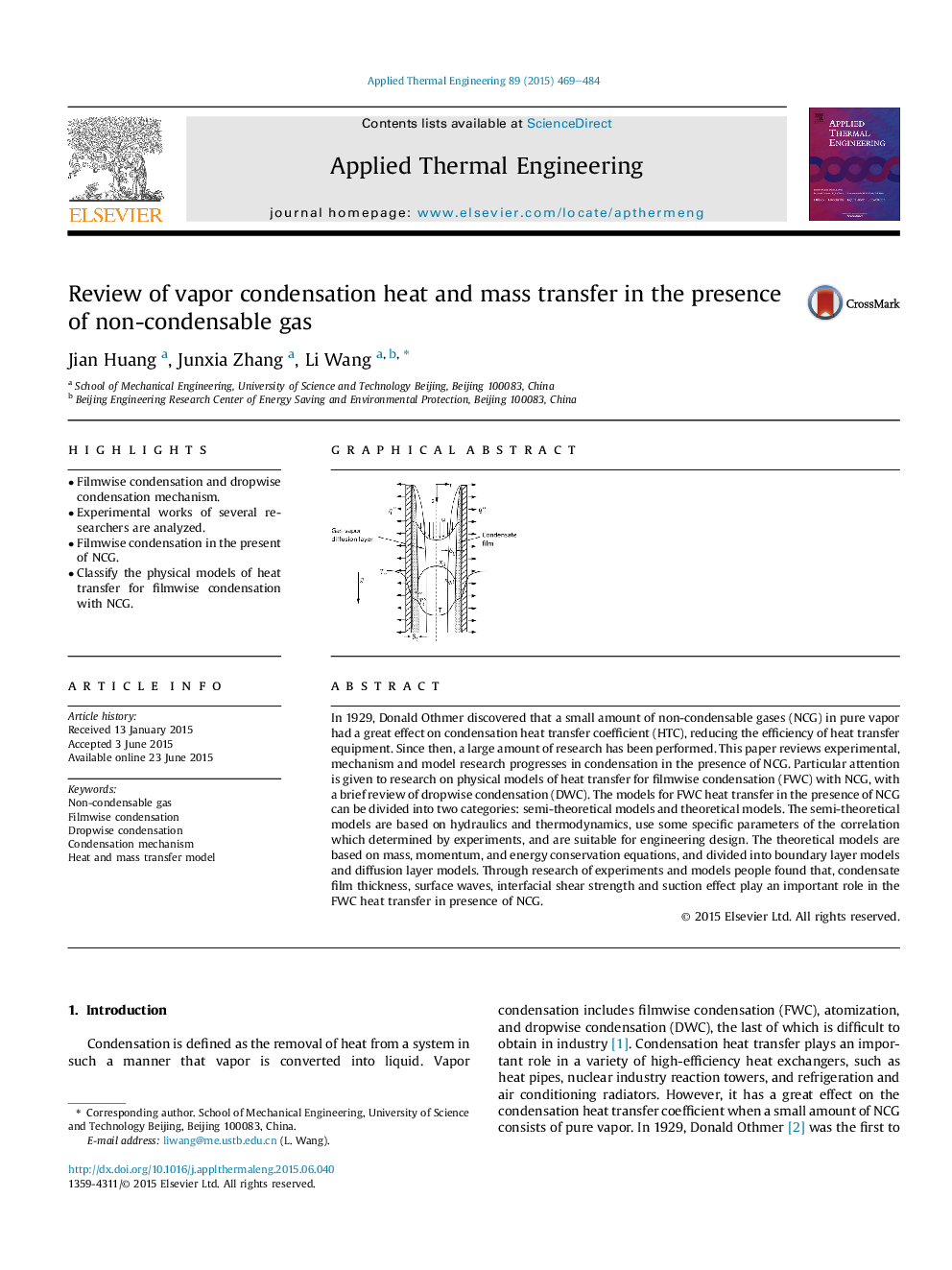| کد مقاله | کد نشریه | سال انتشار | مقاله انگلیسی | نسخه تمام متن |
|---|---|---|---|---|
| 645383 | 1457139 | 2015 | 16 صفحه PDF | دانلود رایگان |
• Filmwise condensation and dropwise condensation mechanism.
• Experimental works of several researchers are analyzed.
• Filmwise condensation in the present of NCG.
• Classify the physical models of heat transfer for filmwise condensation with NCG.
In 1929, Donald Othmer discovered that a small amount of non-condensable gases (NCG) in pure vapor had a great effect on condensation heat transfer coefficient (HTC), reducing the efficiency of heat transfer equipment. Since then, a large amount of research has been performed. This paper reviews experimental, mechanism and model research progresses in condensation in the presence of NCG. Particular attention is given to research on physical models of heat transfer for filmwise condensation (FWC) with NCG, with a brief review of dropwise condensation (DWC). The models for FWC heat transfer in the presence of NCG can be divided into two categories: semi-theoretical models and theoretical models. The semi-theoretical models are based on hydraulics and thermodynamics, use some specific parameters of the correlation which determined by experiments, and are suitable for engineering design. The theoretical models are based on mass, momentum, and energy conservation equations, and divided into boundary layer models and diffusion layer models. Through research of experiments and models people found that, condensate film thickness, surface waves, interfacial shear strength and suction effect play an important role in the FWC heat transfer in presence of NCG.
Typical schematic illustration of the condensation process in vertical tubes. When vapor condenses, NCG accumulates in the liquid surface, forms high partial pressure distribution, and forms the gas–vapor diffusion layer, blocks the vapor passing.Figure optionsDownload as PowerPoint slide
Journal: Applied Thermal Engineering - Volume 89, 5 October 2015, Pages 469–484
